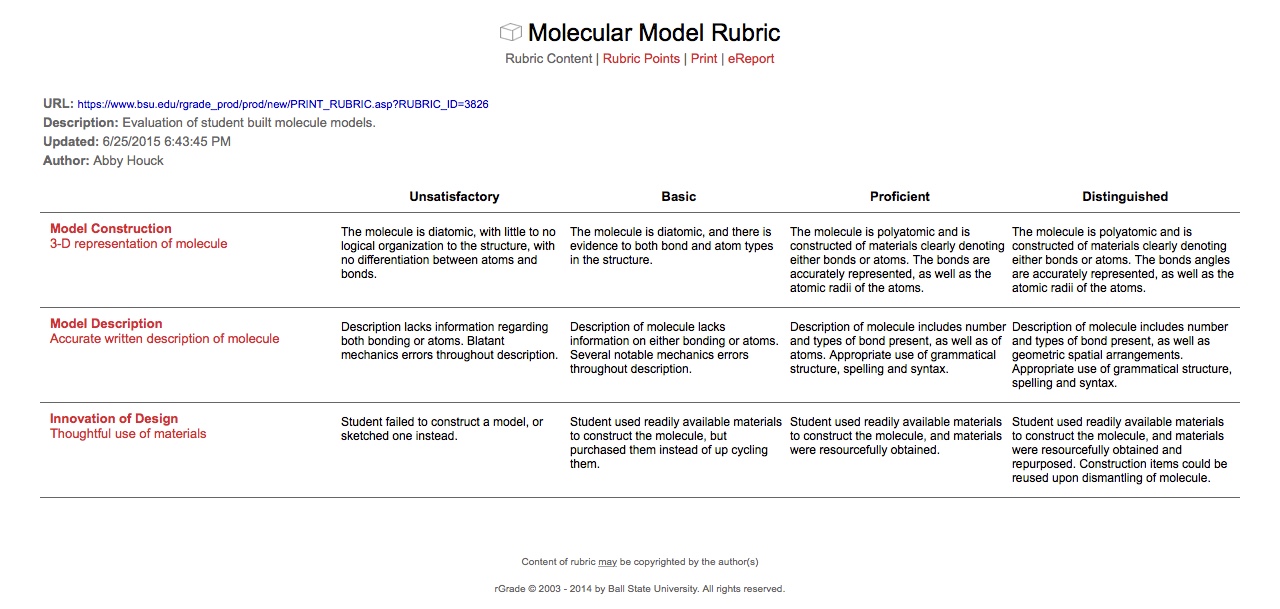My first rubric was designed to accompany a unit on molecular bonding, which was also the basis for my unit map.
I utilized the rgrade rubric system to generate the rubric. I had never used the rgrade system before, but once I established that rubrics can only generated under the instructor function, I was able to easily compose the rubric and to help other Fellows do so, too.

The rows detail how to construct and describe the molecule model and to what degree in order to receive the most credit. The columns of the rubric relate what needs to be done for assessment of the assignment. Grading a model building assignment could normally be very subject in nature, but by applying a rubric to it, this factor will be minimized. I hope that the interactive nature of this assignment will allow students to have a kinesthetic understanding of bonding, as well as allowing them to express themselves creatively, which I feel isn’t always easily allowable in a science classroom. I added a component for a higher score to use upcycle materials that could then be reused once the model is deconstruced, to encourage a more green approach to this project.
Initially, I had very little experience with rubric use, let alone writing one. I am now more comfortable with the notion of using varying techniques of assessment, especially the construction and applying rubrics. I do like that expectations for projects and successful completion of them are straightforward for both students and teachers when rubrics are employed.
InTASC 6 and HLP 15 were also put to use on this task, as a method of composing an assessment and using it to gauge student performance, which is exactly what this assignment does.